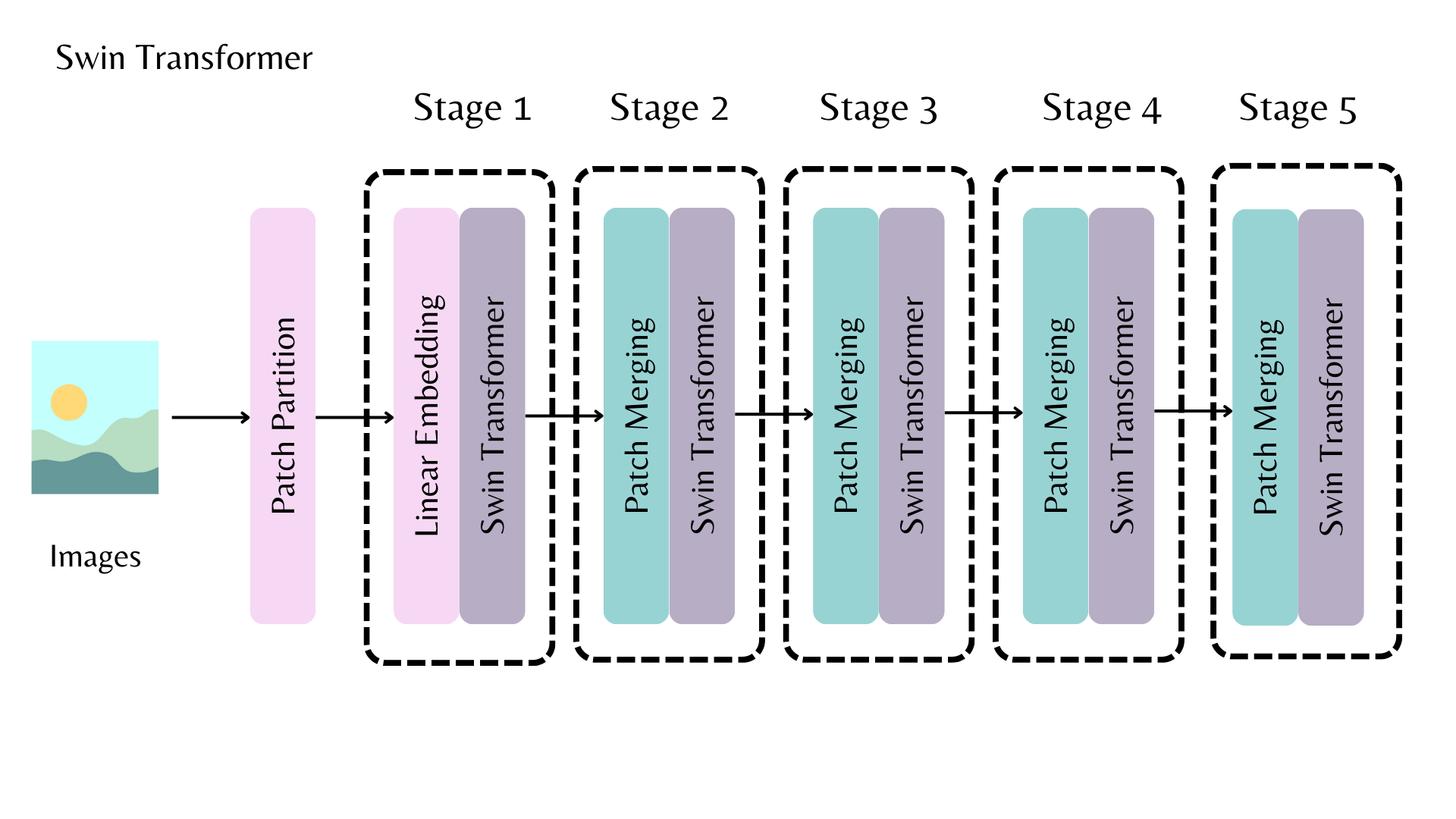Load pretrained instances with an AutoClass
With so many different Transformer architectures, it can be challenging to create one for your checkpoint. As a part of 🤗 Transformers core philosophy to make the library easy, simple and flexible to use, an AutoClass automatically infers and loads the correct architecture from a given checkpoint. The from_pretrained() method lets you quickly load a pretrained model for any architecture so you don’t have to devote time and resources to train a model from scratch. Producing this type of checkpoint-agnostic code means if your code works for one checkpoint, it will work with another checkpoint - as long as it was trained for a similar task - even if the architecture is different.
Remember, architecture refers to the skeleton of the model and checkpoints are the weights for a given architecture. For example, BERT is an architecture, while google-bert/bert-base-uncased is a checkpoint. Model is a general term that can mean either architecture or checkpoint.
In this tutorial, learn to:
- Load a pretrained tokenizer.
- Load a pretrained image processor
- Load a pretrained feature extractor.
- Load a pretrained processor.
- Load a pretrained model.
- Load a model as a backbone.
AutoTokenizer
Nearly every NLP task begins with a tokenizer. A tokenizer converts your input into a format that can be processed by the model.
Load a tokenizer with AutoTokenizer.from_pretrained():
>>> from transformers import AutoTokenizer
>>> tokenizer = AutoTokenizer.from_pretrained("google-bert/bert-base-uncased")Then tokenize your input as shown below:
>>> sequence = "In a hole in the ground there lived a hobbit."
>>> print(tokenizer(sequence))
{'input_ids': [101, 1999, 1037, 4920, 1999, 1996, 2598, 2045, 2973, 1037, 7570, 10322, 4183, 1012, 102],
'token_type_ids': [0, 0, 0, 0, 0, 0, 0, 0, 0, 0, 0, 0, 0, 0, 0],
'attention_mask': [1, 1, 1, 1, 1, 1, 1, 1, 1, 1, 1, 1, 1, 1, 1]}AutoImageProcessor
For vision tasks, an image processor processes the image into the correct input format.
>>> from transformers import AutoImageProcessor
>>> image_processor = AutoImageProcessor.from_pretrained("google/vit-base-patch16-224")AutoBackbone

The AutoBackbone lets you use pretrained models as backbones to get feature maps from different stages of the backbone. You should specify one of the following parameters in from_pretrained():
out_indicesis the index of the layer you’d like to get the feature map fromout_featuresis the name of the layer you’d like to get the feature map from
These parameters can be used interchangeably, but if you use both, make sure they’re aligned with each other! If you don’t pass any of these parameters, the backbone returns the feature map from the last layer.

For example, in the above diagram, to return the feature map from the first stage of the Swin backbone, you can set out_indices=(1,):
>>> from transformers import AutoImageProcessor, AutoBackbone
>>> import torch
>>> from PIL import Image
>>> import requests
>>> url = "http://images.cocodataset.org/val2017/000000039769.jpg"
>>> image = Image.open(requests.get(url, stream=True).raw)
>>> processor = AutoImageProcessor.from_pretrained("microsoft/swin-tiny-patch4-window7-224")
>>> model = AutoBackbone.from_pretrained("microsoft/swin-tiny-patch4-window7-224", out_indices=(1,))
>>> inputs = processor(image, return_tensors="pt")
>>> outputs = model(**inputs)
>>> feature_maps = outputs.feature_mapsNow you can access the feature_maps object from the first stage of the backbone:
>>> list(feature_maps[0].shape)
[1, 96, 56, 56]AutoFeatureExtractor
For audio tasks, a feature extractor processes the audio signal into the correct input format.
Load a feature extractor with AutoFeatureExtractor.from_pretrained():
>>> from transformers import AutoFeatureExtractor
>>> feature_extractor = AutoFeatureExtractor.from_pretrained(
... "ehcalabres/wav2vec2-lg-xlsr-en-speech-emotion-recognition"
... )AutoProcessor
Multimodal tasks require a processor that combines two types of preprocessing tools. For example, the LayoutLMV2 model requires an image processor to handle images and a tokenizer to handle text; a processor combines both of them.
Load a processor with AutoProcessor.from_pretrained():
>>> from transformers import AutoProcessor
>>> processor = AutoProcessor.from_pretrained("microsoft/layoutlmv2-base-uncased")AutoModel
The AutoModelFor classes let you load a pretrained model for a given task (see here for a complete list of available tasks). For example, load a model for sequence classification with AutoModelForSequenceClassification.from_pretrained().
By default, the weights are loaded in full precision (torch.float32) regardless of the actual data type the weights are stored in such as torch.float16. Set torch_dtype="auto" to load the weights in the data type defined in a model’s config.json file to automatically load the most memory-optimal data type.
>>> from transformers import AutoModelForSequenceClassification
>>> model = AutoModelForSequenceClassification.from_pretrained("distilbert/distilbert-base-uncased", torch_dtype="auto")Easily reuse the same checkpoint to load an architecture for a different task:
>>> from transformers import AutoModelForTokenClassification
>>> model = AutoModelForTokenClassification.from_pretrained("distilbert/distilbert-base-uncased", torch_dtype="auto")For PyTorch models, the from_pretrained() method uses torch.load() which internally uses pickle and is known to be insecure. In general, never load a model that could have come from an untrusted source, or that could have been tampered with. This security risk is partially mitigated for public models hosted on the Hugging Face Hub, which are scanned for malware at each commit. See the Hub documentation for best practices like signed commit verification with GPG.
TensorFlow and Flax checkpoints are not affected, and can be loaded within PyTorch architectures using the from_tf and from_flax kwargs for the from_pretrained method to circumvent this issue.
Generally, we recommend using the AutoTokenizer class and the AutoModelFor class to load pretrained instances of models. This will ensure you load the correct architecture every time. In the next tutorial, learn how to use your newly loaded tokenizer, image processor, feature extractor and processor to preprocess a dataset for fine-tuning.
Finally, the TFAutoModelFor classes let you load a pretrained model for a given task (see here for a complete list of available tasks). For example, load a model for sequence classification with TFAutoModelForSequenceClassification.from_pretrained():
>>> from transformers import TFAutoModelForSequenceClassification
>>> model = TFAutoModelForSequenceClassification.from_pretrained("distilbert/distilbert-base-uncased")Easily reuse the same checkpoint to load an architecture for a different task:
>>> from transformers import TFAutoModelForTokenClassification
>>> model = TFAutoModelForTokenClassification.from_pretrained("distilbert/distilbert-base-uncased")Generally, we recommend using the AutoTokenizer class and the TFAutoModelFor class to load pretrained instances of models. This will ensure you load the correct architecture every time. In the next tutorial, learn how to use your newly loaded tokenizer, image processor, feature extractor and processor to preprocess a dataset for fine-tuning.